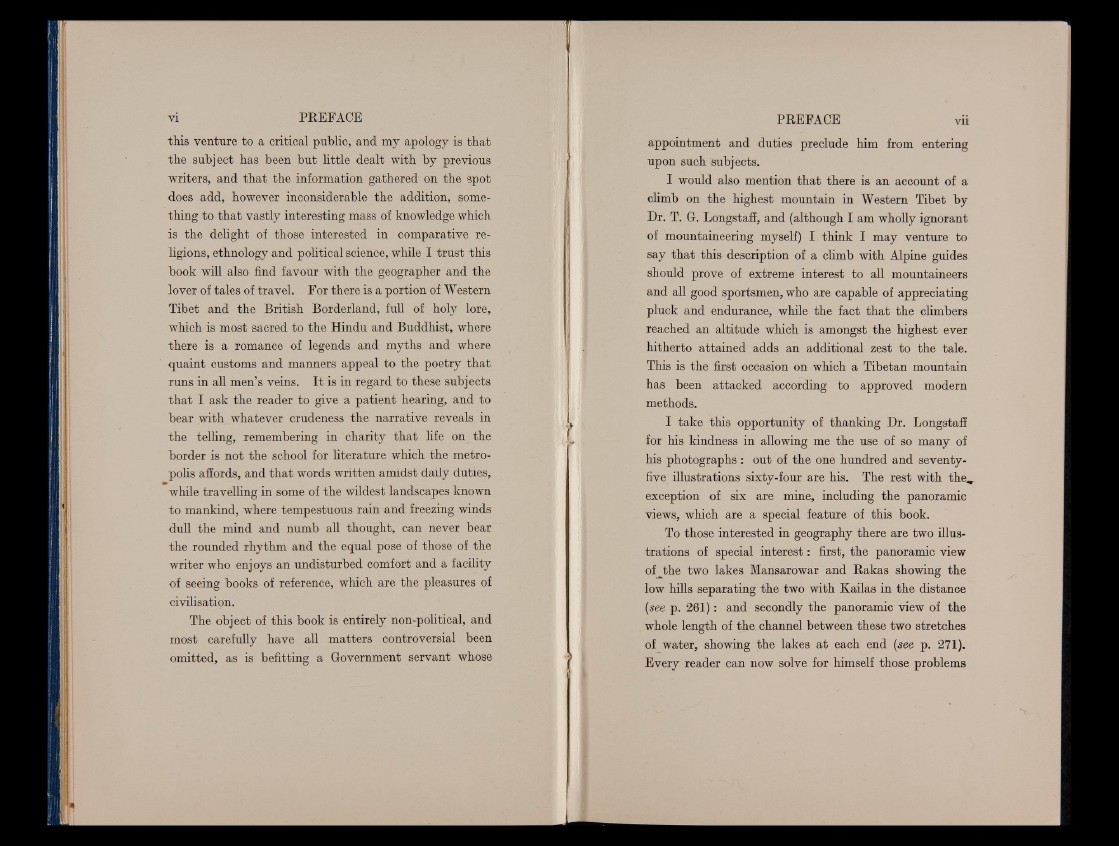
this venture to a critical public, and my apology is that
the subject has been but little dealt with by previous
writers, and that the information gathered on the spot
does add, however inconsiderable the addition, something
to that vastly interesting mass of knowledge which
is the delight of those interested in comparative religions,
ethnology and political science, while I trust this
book will also find favour with the geographer and the
lover of tales of travel. For there is a portion of Western
Tibet and the British Borderland, full of holy lore,
which is most sacred to the Hindu and Buddhist, where
there is a romance of legends and myths and where
quaint customs and manners appeal to the poetry that
runs in all men’s veins. I t is in regard to these subjects
that I ask the reader to give a patient hearing, and to
bear with whatever crudeness the narrative reveals in
the telling, remembering in charity that fife on the
border is not the school for literature which the metropolis
affords, and that words written amidst daily duties,
while travelling in some of the wildest landscapes known
to mankind, where tempestuous rain and freezing winds
dull the mind and numb all thought, can never bear
the rounded rhythm and the equal pose of those of the
writer who enjoys an undisturbed comfort and a facility
of seeing books of reference, which are the pleasures of
civilisation.
The object of this book is entirely non-political, and
most carefully have all matters controversial been
omitted, as is befitting a Government servant whose
appointment and duties preclude him from entering
upon such subjects.
I would also mention that there is an account of a
climb on the highest mountain in Western Tibet by
Dr. T. G. Longstaff, and (although I am wholly ignorant
of mountaineering myself) I think I may venture to
say that this description of a climb with Alpine guides
should prove of extreme interest to all mountaineers
and all good sportsmen, who are capable of appreciating
pluck and endurance, while the fact that the climbers
reached an altitude which is amongst the highest ever
hitherto attained adds an additional zest to the tale.
This is the first occasion on which a Tibetan mountain
has been attacked according to approved modern
methods.
I take this opportunity of thanking Dr. Longstaff
for his kindness in allowing me the use of so many of
his photographs : out of the one hundred and seventy-
five illustrations sixty-four are his. The rest with the„
exception of six are mine, including the panoramic
views, which are a special feature of this book.
To those interested in geography there are two illustrations
of special interest: first, the panoramic view
of^the two lakes Mansarowar and Rakas showing the
low hills separating the two with Kailas in the distance
(see p. 261): and secondly the panoramic view of the
whole length of the channel between these two stretches
of water, showing the lakes at each end (see p. 271).
Every reader can now solve for himself those problems